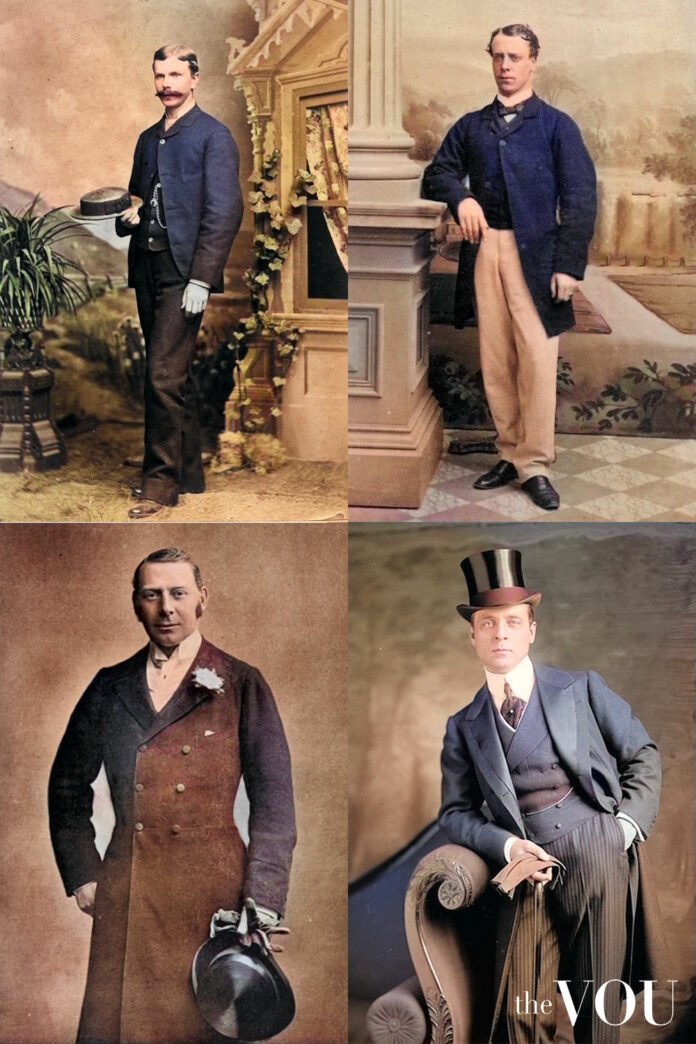Victorian men’s fashion laid the foundation for contemporary menswear.
Characterised by complex social, technological, and aesthetic changes, the Victorian era – Queen Victoria’s reign from 1837 to 1901 – gave rise to a distinctive sartorial language for men.
Victorian-era garments were more than clothing articles; they were narratives of identity, societal values, technological progress, and artistic creativity.
Victorians used fashion to represent the time’s idealised gender roles visually. Men’s Victorian looks echoed the values of respectability and restraint.
And, as the middle class began emulating the styles of the aristocracy, fashion became a tool for showcasing wealth and social status.
Understanding the evolution of Victorian men’s fashion provides valuable insight into how these influences continue to shape modern menswear.
In the following sections, we will explore the progression of Victorian men’s fashion from its early days to its lasting impact on today’s styles.
Early Victorian Fashion (1837-1850)
The early Victorian period, marked by the ascension of Queen Victoria, was influenced by the monarch’s dressing style, embodying a fusion of opulence and restraint.
Early Victorian men’s fashion showcased a more uniform and somber palette, dominated by charcoal, navy, and deep green.
The period saw the introduction of the frock coat, a staple in Victorian men’s wardrobes, paired with waistcoats and full-length trousers.
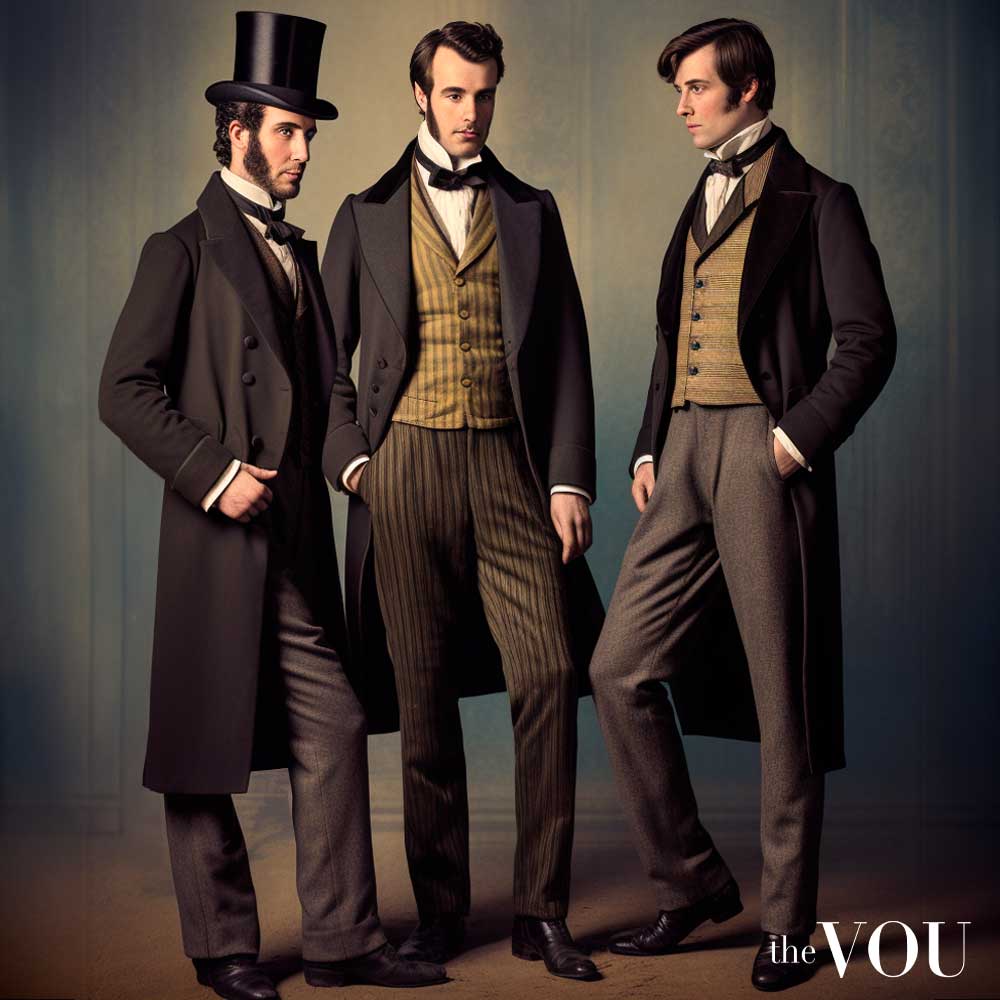
Victorian-era accessories were crucial in signifying the wearer’s social status and fashion awareness.
Women wore bonnets trimmed with ribbons and lace, and men wore top hats made of silk or beaver fur.
Mid-Victorian Fashion (1851-1870)
Mid-Victorian men’s fashion departed from the strictly formal attire of previous decades, signalling a shift towards practicality and lighter male dress codes.
The sack suit, lacking a waist seam and made of tweed or flannel in a looser-fitting style, emerged as a more comfortable alternative to the previously dominant frock coat.
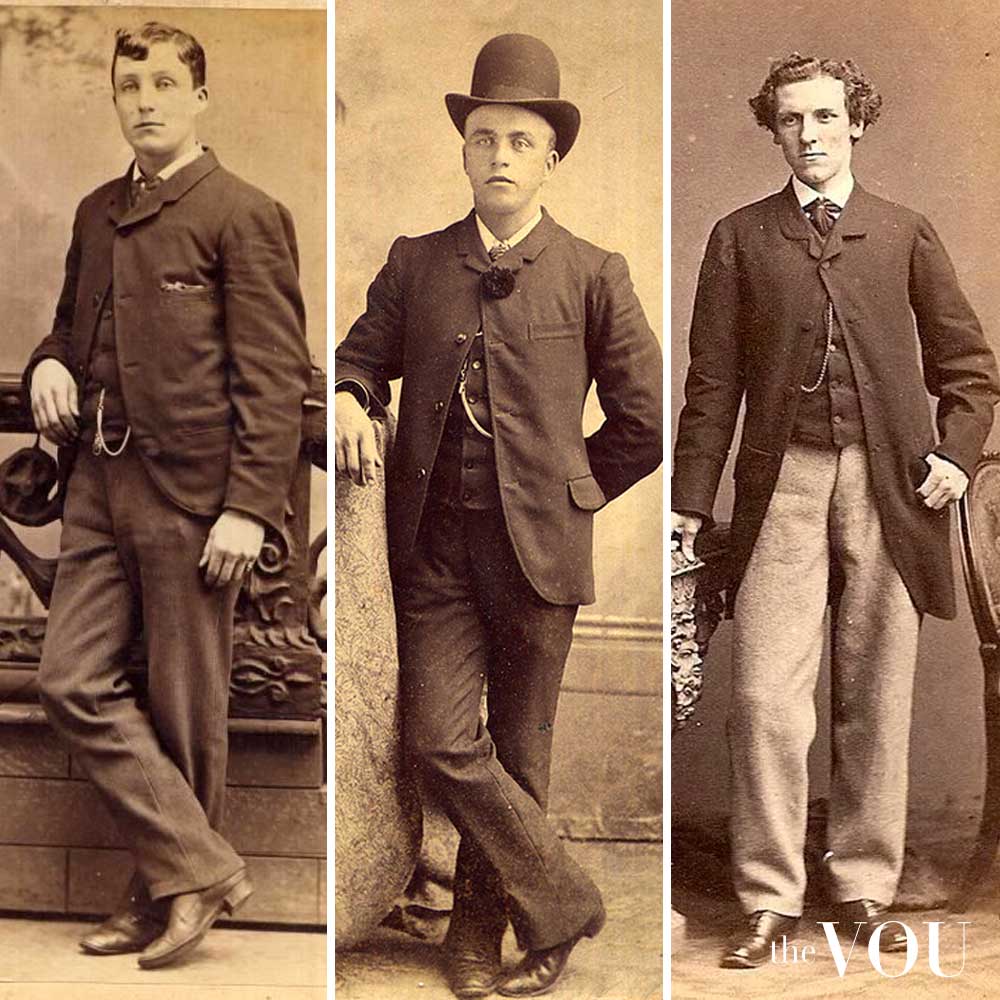
Waistcoats and trousers remained relatively unchanged, but new fabrics and colours emerged simultaneously with the ‘Paletot,’ a new type of overcoat.
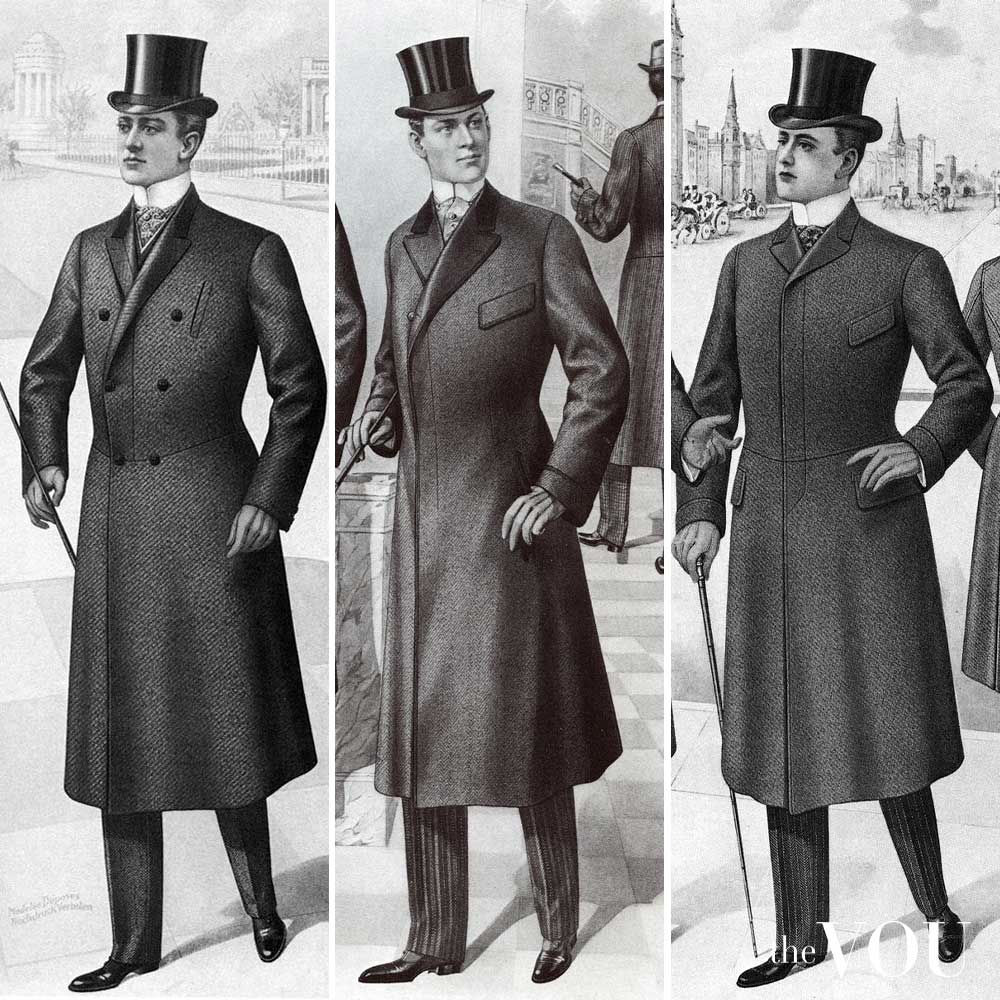
The Industrial Revolution and advancements in textile manufacturing, notably the power loom, reduced fabric production costs and time and transformed fashion during the Mid-Victorian era.
The discovery of synthetic dyes in the 1850s, starting with William Perkin’s mauveine, transformed the fashion industry and allowed for new colours in garments, away from the limited, natural dyes of earlier periods.
Invented by Elias Howe and popularised by Isaac Singer, the rise of the sewing machine facilitated the mass production of clothing and the standardisation of sizes and styles, a precursor to modern ready-to-wear fashion.
New styles and trends emerged faster, clothing became more attainable, and fashion began to reflect societal changes.
Late Victorian Fashion (1871-1900)
The Late Victorian era saw a significant evolution in men’s fashion with the growing popularity of the more comfortable and practical lounge suit.
With a less formal design than the frock coat, black, charcoal, and blue lounge suits became the symbol of the professional man and the precursor to the modern business suit.
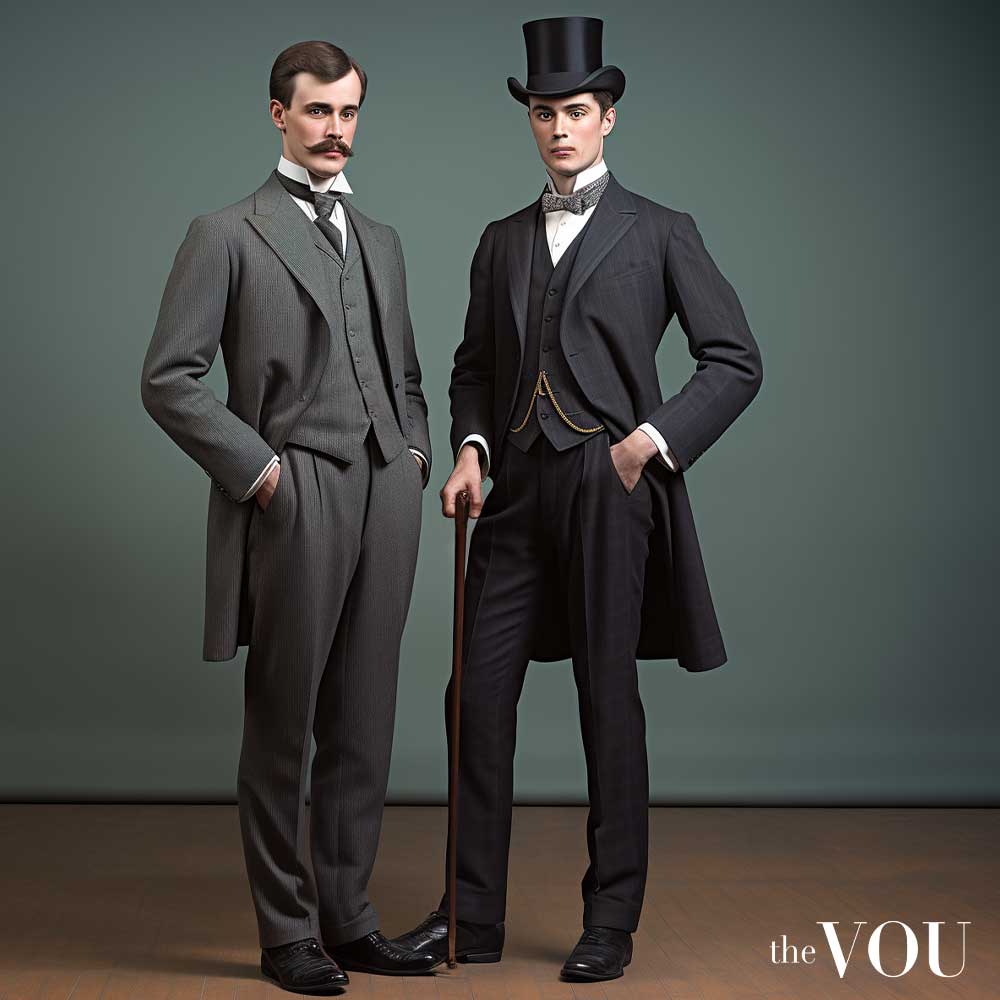
Women’s shoes featured high-buttoned or laced designs made from leather or cloth, while men’s footwear saw the emergence of the Oxford shoe, a style that later became a staple in men’s fashion.
Accessories complemented the outfits and indicated social status and fashion consciousness.
For men, top hats from beaver fur or silk polished to a high sheen, canes from ebony or walnut with silver handles, ties, and pocket watches in various styles and patterns.
Victorian Fashion in the Modern Era
Victorian fashion has profoundly influenced popular culture, impacting film, television, and theatre.
Costume dramas like ‘Penny Dreadful’ and ‘The Crown’ showcase meticulous reproductions of Victorian attire, bringing the era’s fashion to life for modern audiences.
With distinct silhouettes, patterns, and ornate details, Victorian fashion is omnipresent in contemporary design, particularly what’s known as the Old Money dressing style, albeit with reinterpreted social meanings.
Designers like Dolce & Gabbana use velvet suits, lace gloves, ruffles, and puff sleeves to emphasise the luxurious and romantic aspects of the era.
By adapting Victorian patterns, contemporary designers challenge and redefine the historical connotations of these garments and ideas of femininity and societal expectations.


